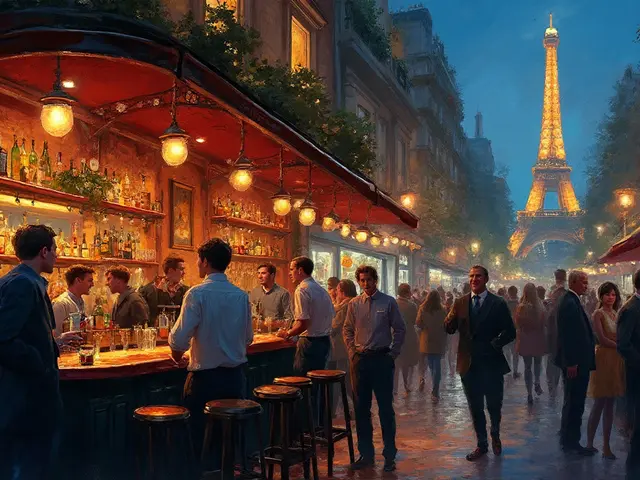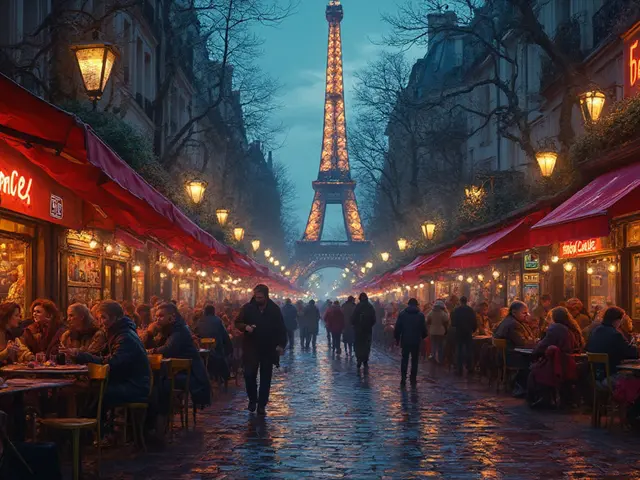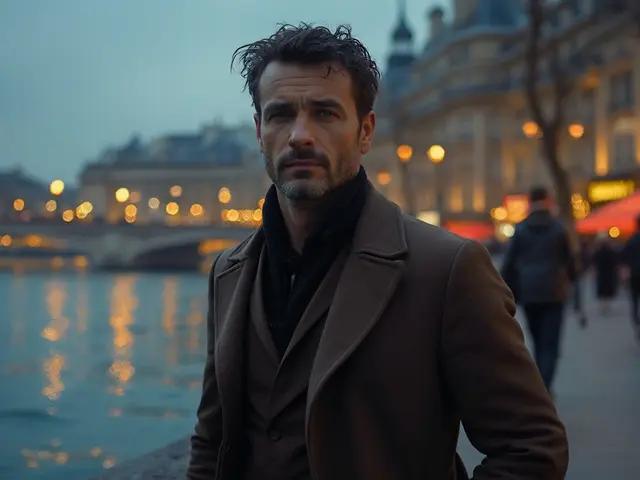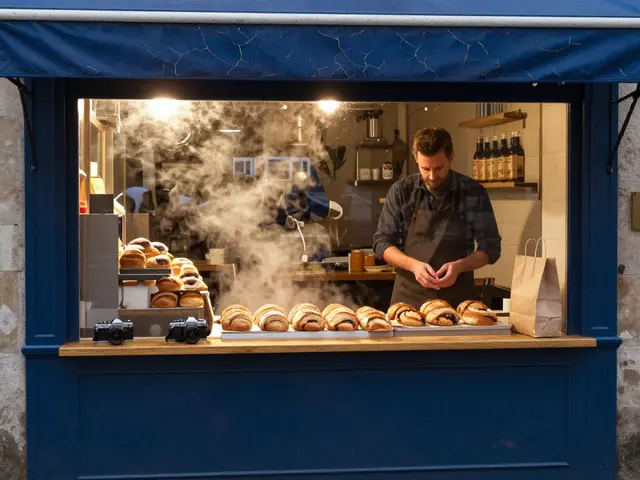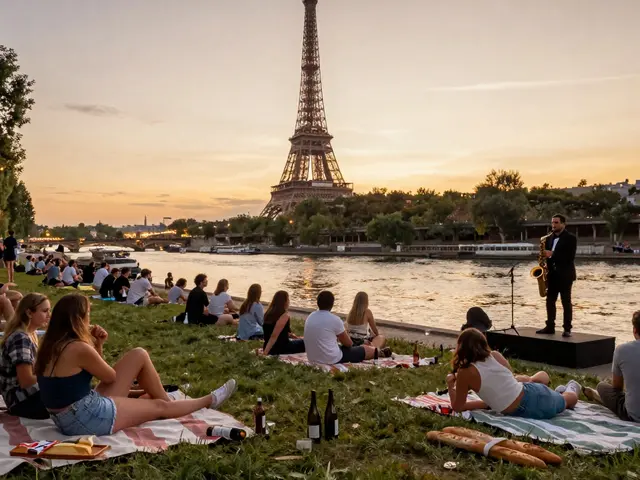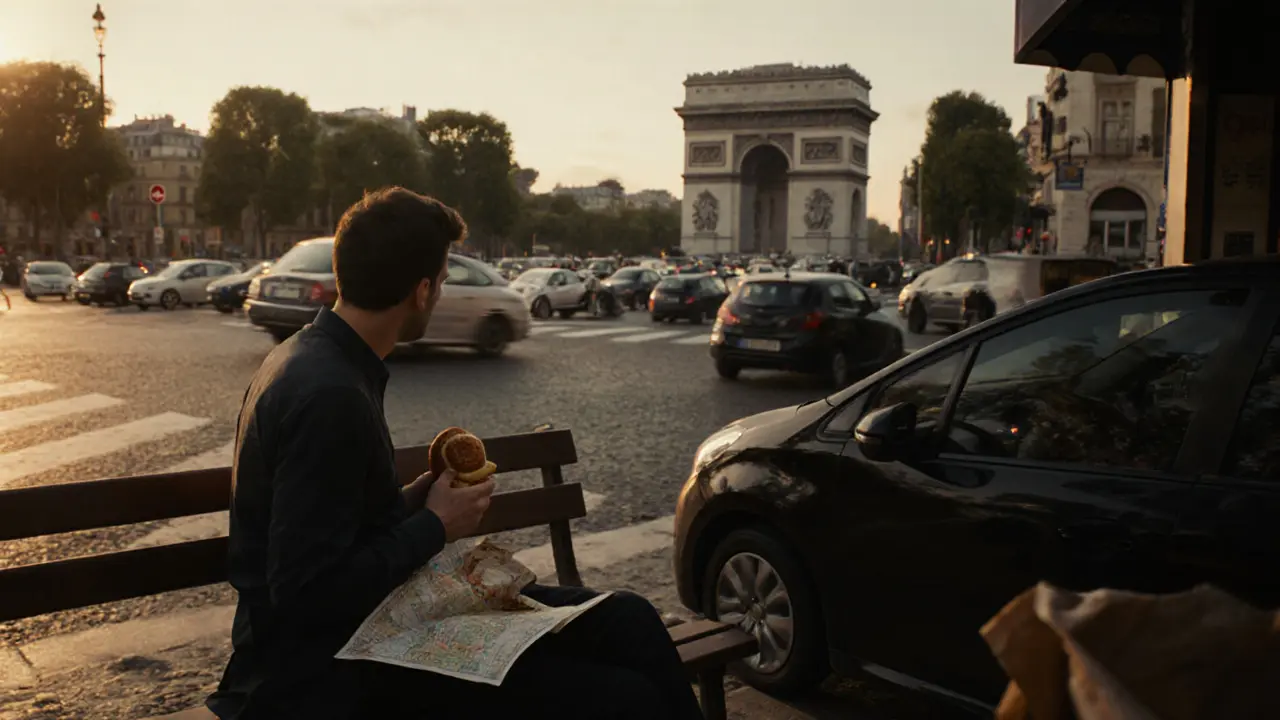
Tony Carrera didn’t move to Paris for the croissants. He didn’t come for the art, the fashion, or even the romance. He came because the roads called to him.
Most people think of Paris as a city of walking, cycling, or metro tickets. But for Tony, it was the drive that made the city come alive. He arrived in 2019 with a rented Peugeot 208, a worn-out map, and a stubborn belief that the best way to understand a city was behind the wheel. He wasn’t wrong.
The First Time He Lost His Way
His first week in Paris ended with him circling the Arc de Triomphe seven times. He didn’t know about the roundabout rules. He didn’t know that French drivers don’t signal unless they’re about to cut you off. He didn’t know that the Champs-Élysées at 7 p.m. wasn’t a boulevard-it was a gauntlet.
He got out of the car, walked to a boulangerie, bought a pain au chocolat, and sat on a bench. A woman in a trench coat noticed him staring at the traffic and said, "You’re not French, are you?" He nodded. She smiled. "Then you’re lucky. You still have time to learn."
That night, he downloaded a French driving app called "Route du Sud"-not for navigation, but for audio clips of local drivers explaining how to merge at Place de la République or when to yield at a "cédez le passage" sign. He listened to it every morning while making coffee.
The Rules No One Tells You
Paris doesn’t have stop signs. It has yield signs. And in Paris, yielding doesn’t mean slowing down-it means waiting until the car in front of you decides to move. Tony learned that the hard way when he stopped at a yield sign and got honked at for 47 seconds straight.
He started noticing patterns. Drivers in the 15th arrondissement were polite. In the 18th, they were aggressive but fair. In the 11th, they’d wave you in like you were family. The key wasn’t speed-it was rhythm. Parisian driving wasn’t about getting there fast. It was about matching the flow.
He began to recognize the drivers. The old man in the Citroën DS who always turned left at the last possible second. The student in the Renault Zoe who parked diagonally and never apologized. The delivery rider on a Vespa who somehow navigated three lanes of traffic without ever touching a bumper.
Tony started writing notes in a small leather journal: "Don’t brake for pedestrians unless they’re already in your lane." "If they flash their high beams, they’re not warning you-they’re inviting you to go first." "Never assume a car turning right is turning right. Sometimes, they’re just checking their mirror."

The Car That Became a Home
By 2021, Tony had bought a 2016 Renault Mégane. Not because it was fancy. Because it was cheap, reliable, and had a trunk big enough for his books, his guitar, and the occasional bag of baguettes from the market on Rue Mouffetard.
He turned it into a mobile studio. He recorded interviews with other expats who drove in Paris-Americans, Australians, Japanese. One woman from Tokyo said she drove in Paris because it felt more alive than Tokyo. "In Tokyo, everyone follows the rules. In Paris, everyone bends them. But somehow, it works."
He started a YouTube channel called "Paris with Drive." No fancy edits. Just him, his camera mounted on the windshield, and his voice explaining the unspoken rules. One video-"How to Park in Paris Without Crying"-got over 2 million views. Comments flooded in: "I thought I was the only one who panicked at Place de Clichy." "My husband laughed at me for watching this, but I learned how to park in one try."
The Midnight Drive to Montmartre
There’s a moment every driver in Paris remembers. For Tony, it was a rainy Thursday night in December. He had just finished a long day helping a friend move. He didn’t feel like going home. He got in the car, turned on the heater, and drove.
He didn’t have a destination. He just drove. Past the empty cafés of Saint-Germain. Through the silent streets of the Latin Quarter. Up the winding roads of Montmartre, where the streetlights flickered like old film reels.
At the top, he parked beside the Sacré-Cœur. No one else was there. The city below was quiet. He rolled down the window. The smell of wet stone and distant bread filled the car. He thought about how strange it was-that a city so famous for its walkability could also be so deeply felt from behind the wheel.
He didn’t take a photo. He didn’t post it. He just sat there until the rain stopped.

What Paris Taught Him About Driving
Tony doesn’t drive fast. He doesn’t race. He doesn’t even like loud music in the car. What he loves is the quiet understanding between strangers on the road.
He learned that driving in Paris isn’t about control. It’s about reading people. It’s about patience. It’s about knowing when to go, when to wait, and when to let someone else have the space-even if you’re in a hurry.
He once saw a woman in a red Citroën stop at a crosswalk, not because the light was green, but because an elderly man was walking slowly. She waited. Then she waved him across. He nodded. She drove on. No one honked. No one yelled. That moment, Tony says, was more French than any Eiffel Tower postcard.
He started teaching weekend driving workshops for expats. Not to teach them how to parallel park. But how to breathe. How to listen. How to stop fighting the system and start flowing with it.
"You don’t master Paris," he tells them. "You learn to dance with it."
Why This Matters Beyond the Roads
There’s a myth that cities are best experienced on foot. But Tony’s story shows something else: that the way you move through a city tells you who you are-and who the city is.
Paris isn’t just about cafés and museums. It’s about the rhythm of its traffic, the silence between honks, the way people share space without words. Tony’s journey isn’t about cars. It’s about adaptation. About finding belonging in unexpected places.
He still drives the same Mégane. He still gets lost sometimes. But now, when he circles the Arc de Triomphe, he does it with a smile. He knows the rhythm now. And he knows that in Paris, the best routes aren’t the shortest ones. They’re the ones that let you see the city breathe.
Is Tony Carrera a real person?
Tony Carrera is a fictional character created to illustrate the experience of expats navigating Parisian driving culture. While not a real person, his story is built from hundreds of real accounts shared by foreigners who’ve learned to drive in Paris-from the confusion of roundabouts to the quiet courtesies on empty streets. His journey reflects truths many have lived, even if his name isn’t in any official record.
Can foreigners really drive in Paris without a French license?
Yes, if you’re from the EU, you can drive with your home license indefinitely. Non-EU visitors can use their license for up to one year after arrival. After that, they must exchange it for a French license, which requires passing a theory test and sometimes a practical exam. Many expats delay this process, relying on international permits or temporary stays. The real challenge isn’t legality-it’s learning how to drive like a Parisian.
What’s the biggest mistake foreigners make driving in Paris?
Assuming rules work the same as back home. French drivers don’t always follow signs literally-they follow context. A yield sign doesn’t mean stop-it means wait until the flow allows you in. Roundabouts aren’t for slowing down-they’re for keeping momentum. And parking? It’s less about rules and more about reading the street. The biggest mistake? Trying to control the situation. The best drivers learn to read the rhythm instead.
Is driving in Paris actually safer than walking?
It’s not about safety-it’s about perception. Pedestrians face risks from scooters, bikes, and distracted drivers. Drivers face risks from sudden stops, narrow alleys, and unpredictable parking. Statistically, car accidents in Paris are rare compared to other major cities. But the stress level? High. Many expats say walking feels safer emotionally, even if driving is statistically fine. The real danger isn’t the car-it’s the frustration of not understanding the unspoken code.
What’s the best car for driving in Paris?
Small, nimble, and easy to park. The Renault Twingo, Peugeot 208, and Citroën C3 are the most popular among locals and expats. Electric cars like the Renault Zoe are rising fast thanks to low parking fees and access to restricted zones. Big SUVs or sedans? They’re a nightmare. Narrow streets, tight parking spots, and aggressive drivers make them impractical. The best car isn’t the most powerful-it’s the one that fits the city.


